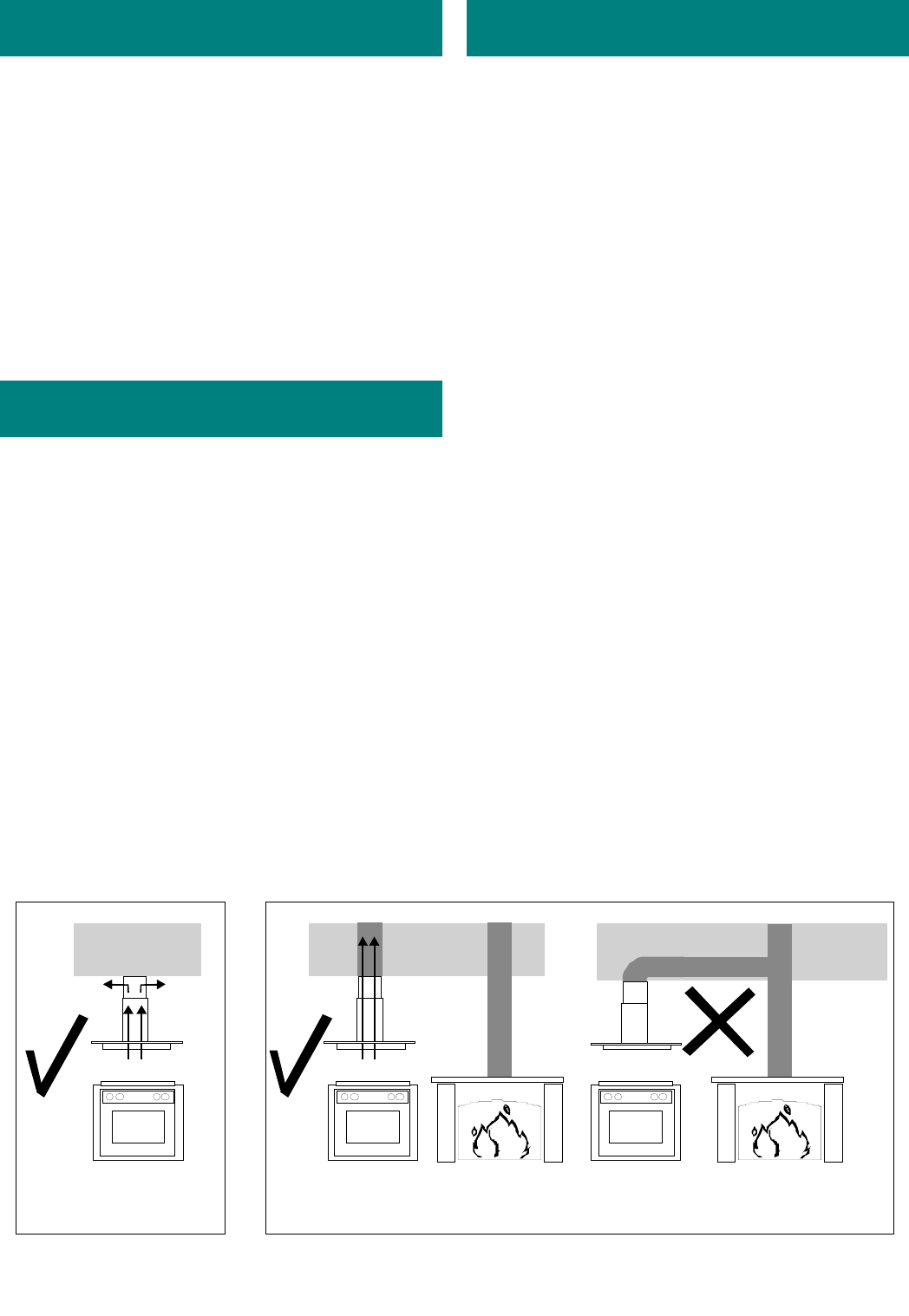
Page 3
Preparing for installation.
2 Venting air to the outside.
When discharging the air into a ventila-
tion shaft or directly through the wall
into the open , please take note of the fol-
lowing:
• Exhaust air from the extractor hood
must not be directed into a flue or
chimney which is used for exhaust-
ing the fumes or smoke from other
appliances burning gas or fuels.
• Please ensure that regulations con-
cerning the discharge of exhaust air
have been fulfilled. (SABS IEC
60335-2-31).
For optimum extractor hood efficiency use a
short, smooth, round air exhaust pipe with
as few bends as possible A 150mm diameter
exhaust pipe is recommended. Long box
section, narrowed or bent pipes will hinder
performance and increase noise levels.
• Connecting a 150 mm diameter pipe:
Mount the pipe directly onto the air outlet
on the extractor hood.
• Connecting a 125 mm or 100mm di-
ameter pipe: Attach a reducing connec-
tor (available from a specialist retailer) to
the air pipe and then attach to the ex-
haust-air duct.
• The extractor hood filters out solid par-
ticles before the air is recirculated, via
the vents on the side of the upper
chimney, into the kitchen.
• Care must be taken during installation
not to obstruct these vents.
• No ducting is required for this type of
installation.
1 Recirculating filtered air.
Recirculate
filtered air
Exhaust air through a dedicted pipe
not shared with another fuel burning appliance.
ceiling
ceilingceiling
• The extractor hood has the ability to:
• Recirculate the filtered air back into
the kitchen. Use this method where you
cannot vent though the ceiling
• Or to vent the filtered air through the
ceiling and to the outside.
• Decide on which option best suits you
before commencing with the installa-
tion.











